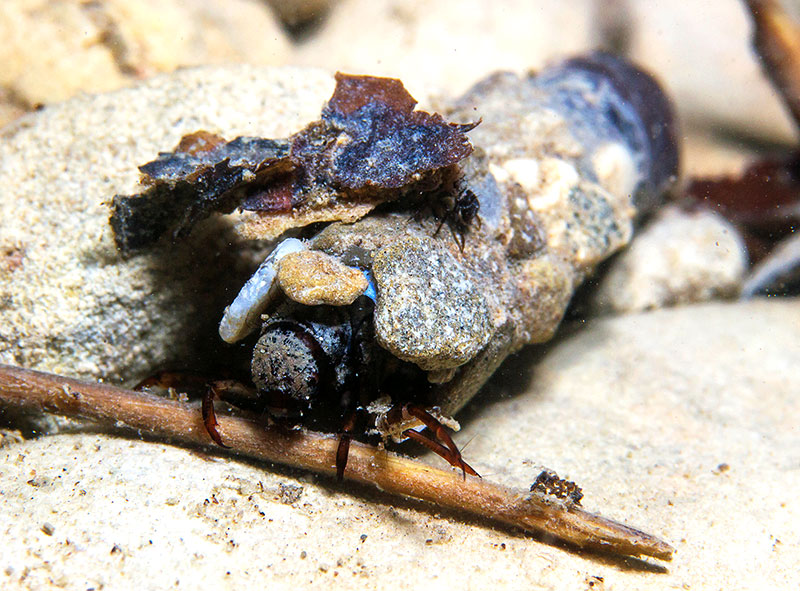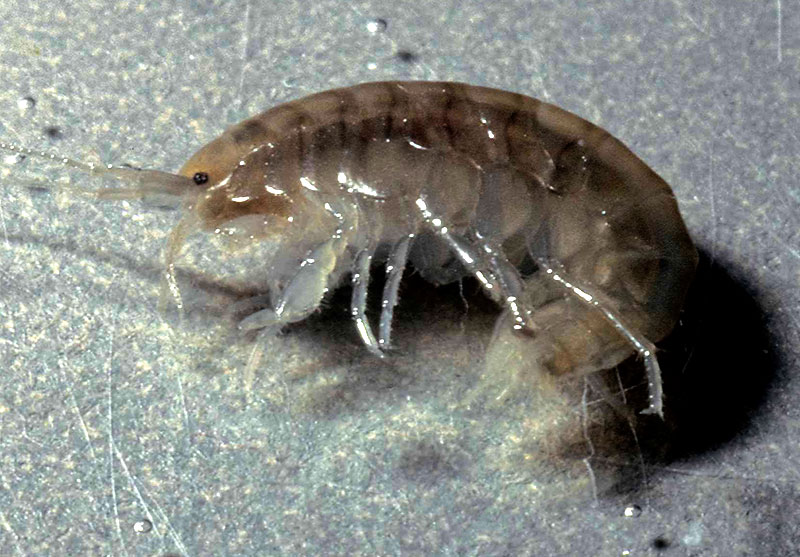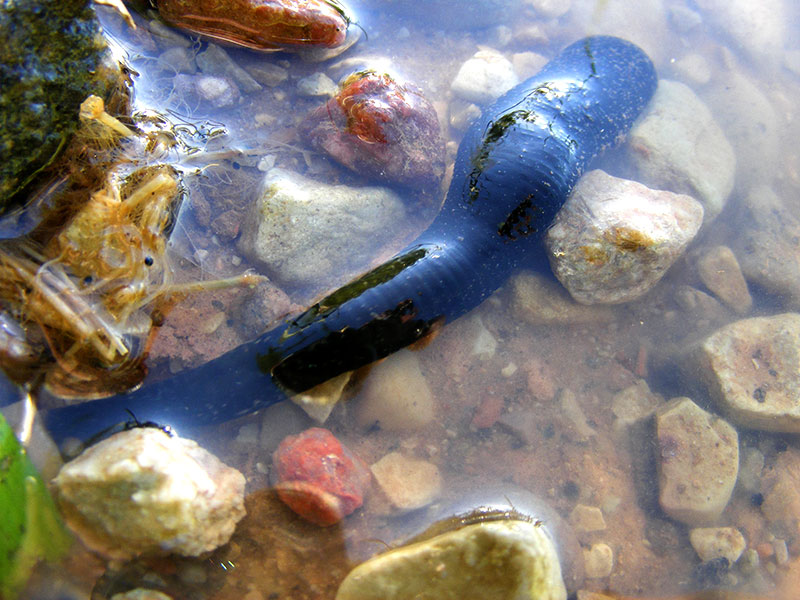
Macroinvertebrates are bugs big enough to be seen with the naked eye. The ecosystems of wetlands, creeks, ponds and springs teem with aquatic macroinvertebrates, considered living indicators of water quality. These little-noticed animals spend all or most of their lives in water. Learning to identify at least a few key aquatic macroinvertebrates will help you determine your water quality.
A healthy stream includes a diverse range of insects, and a variety of larger wildlife that feed on them (fish, muskrat, frogs, lizards, birds and bats, to name a few). Likewise, these insects need a variety of food sources themselves. For example, snails graze on algae; dragonflies eat other insects such as mosquitoes; leeches parasitize slugs and worms; and caddisfly larvae decompose plant and animal debris, while adult caddisflies sip nectar from flowers.
Most Sensitive to Pollutants

Shutterstock
Organism: Caddisfly
What to Look For: The larvae of caddisflies disguise well in rocky streams. Some types of caddisflies form webs that catch debris. Others build small casings out of grains of sand and tiny pebbles. The soft-bodied larvae of these insects can hide within. Certain species undulate their entire cases to keep water circulating for respiration.
Presence Means: Caddisflies are important to aquatic quality as recyclers and stream cleaners. They feed mainly on plant debris and algae. Like mayflies, caddisflies are intolerant of low oxygen levels.
Tolerant of Pollutants

Organism: Scud
What to Look For: Scuds are some of the smallest aquatic creatures we can see without a microscope. Also called side-swimmers, these insects often appear whitish or nearly translucent, like tiny shrimp or crayfish. They are mainly scavengers and detritivores. Scuds generally use tiny hairs on their legs to strain floating detritus. They collect and shred just about everything that’s small enough to catch. You can find them in shallow water, between rocks and among roots.
Presence Means: Scuds are tolerant to many pollutants and environmental stresses, but some species are very sensitive to the presence of heavy metals.
Very Tolerant of Pollutants

Organism: Leech
What to Look For: Leeches are a type of worm with a flattened body. They can loop their bodies up to move like an inchworm. One difference, however, is the presence of a sucker at each end of the leech’s body. Not all leeches are parasitic, and most are specialized for a certain type of host. In some cases, leeches are the top predator in their aquatic environment, and they play an important role in population control of insects.
Presence Means: Leeches are more likely to be present in warm, stagnant bodies of water that are choked up with submerged vegetation. Environmental stressors, such as warming because of low flows, or low dissolved oxygen levels from algal blooms, can result in an imbalance in the leech population
For the most accurate assessment of your stream’s water quality, sample your macroinvertebrates the same time each year. The Environmental Protection Agency recommends the late spring when larvae are at a later stage of development. It would be wise to share your findings with your local water quality agency or watershed group. Many of them offer free training and supplies for water quality monitoring. Keep in mind that water passes through and under property lines, and the quality of your water affects your neighbors downstream.




